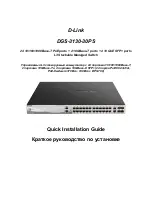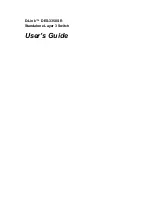
16
4. DS1 Diagnostics
DS1 is equipped with internal powerful diagnostics system able
to identify system faults and increase the reliability of opera-
tions in the network.
The following diagram illustrates the diagnostic hierarchy at-
tached below the system architecture of DS1:
Figure 11. DS1 system architecture
Part of the diagnostics concerns the individual subsystem and
is performed individually (eg. each unit with its circuits, motors
etc.).
In addition to subsystem diagnostics, DS1 includes System di-
agnostics concerning the status of the whole apparatus.
DS1 performs an operation by only applying an Open or
Close command when the master system (system diagnos-
tics) is in the READY condition.
4.1 Base Module Diagnostics
Startup Diagnostics for all subsystems
At power up, the first step is to check communication start-
up in the three-phase system (integrity of CPU and versions is
checked).
When this step has terminated, the green led of the three con-
trol subsystems starts blinking fast.
The capacitor charger starts charging capacitor storage at
350 VDC.
After this step, all the following functionalities are continuously
checked by every subsystem as follows:
− Internal power rails.
− Internal temperatures.
− Encoder.
− Motor port Integrity.
− Motor connections and motor winding integrity.
− Tank capacity estimation
This operation is performed by each module at a time since
capacitor excitation performed by just one module can dis-
turb the measurement performed by another one.
− Pole position check
If the position is within certain limits (almost Open or Closed),
the subsystem adjusts the position (see shaft supervision
monitoring function). If the position is too far from the Open
or Closed position the system stops and requires a Homing
procedure to restore it to the Open condition.
If one of the three positions is wrong, the red led will be on
for the entire unit (the shaft supervision function is blocking
all the modules).
If the pole positions are ok and other diagnostics checks are
performed successfully, the units will be ready to operate
(the red led on the control system will now turn off), with the
exception of the Master system unit.
The Master system not only allows the individual subsystem
diagnostics to operate but the System Diagnostics as well.
Position Supervision Function
The motion controller turn off (sleep status) in order to reduce
power consumption and power dissipation. An additional su-
pervision function continuously checks the position of the shaft
and wakes up the motion controller if a significant movement is
detected. At this point, the motion controller block reacts im-
mediately and corrects the shaft position.
Master Diagnostics at startup
At this stage, the Master is not providing the ready condition
because other steps are still required:
The Ready condition is inhibited at startup (if the device is in
the Open condition).
DS1 implements an internal timer (default is 5 mins) that pre-
vents closing after opening since the power capacitors are not
discharged.
Note that in a de-energized condition (upstream CB input high)
the close mask function (close inhibition) is by-passed.
Contact your ABB representative support or sales to request
removal or a customized version of the “close inhibition time”
function. (It can be programmed in the control system).
4.2 Master Diagnostics
The Ready condition can be inhibited at any time by a sub-
system that is preventing operation due to failed subsystem
diagnostic steps.
The Ready condition is inhibited by the master due to an ab-
sent synchronization signal (in the operative mode without the
upstream CB input energized).
The Ready condition is inhibited if low pressure (blocking the
pressure sensor) opens the interlock loop (see circuit dia-
grams).
The Ready Condition is inhibited when the position supervisor
is tripping.
Provided
by
Northeast
Power
Systems,
Inc.
(NEPSI)
















































